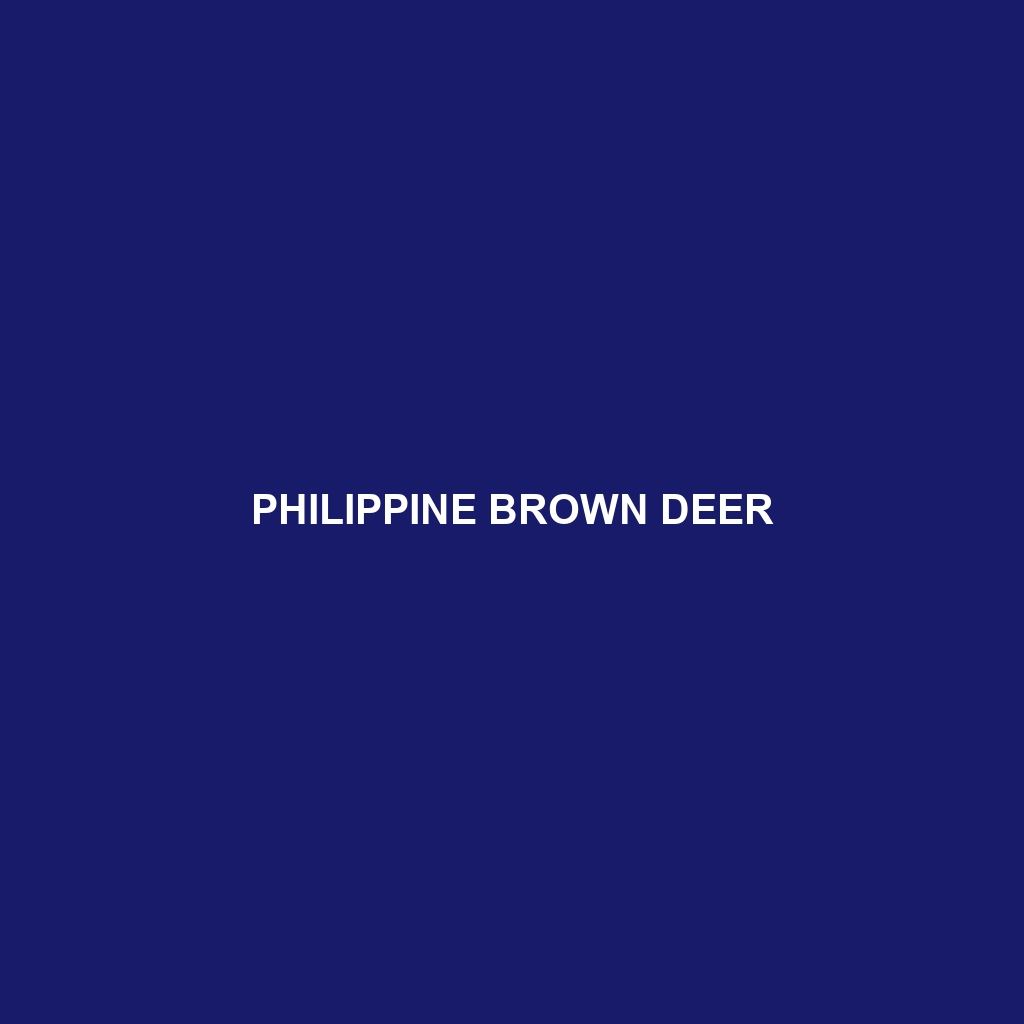Philippine Spotted Deer (Scientific Name: Cervus alfredi)
Common Name: Philippine Spotted Deer
Scientific Name: Cervus alfredi
Habitat
The Philippine Spotted Deer, also known as the Visayan Spotted Deer, is primarily found in the lush rainforests and mountainous regions of the Philippines, predominantly on the islands of Negros and Panay. This species thrives in tropical and subtropical forests, where dense vegetation provides ample cover and sustenance.
Physical Characteristics
The Philippine Spotted Deer exhibits a size range of approximately 90 to 120 cm in length, with an average height of 60 to 90 cm at the shoulder. Their coats are characterized by a rich reddish-brown hue adorned with distinctive white spots, providing effective camouflage in their forest habitat. Males possess antlers that can span up to 75 cm, which are typically shed annually after the breeding season.
Behavior
Philippine Spotted Deer are primarily crepuscular, showing heightened activity during dawn and dusk. They are known for their social structures, often found in small herds led by a dominant male. Their communication includes a variety of vocalizations and body language, essential for maintaining group cohesion and alerting to potential threats.
Diet
This species is herbivorous and predominantly grazes on a diet consisting of grasses, leaves, fruits, and young shoots. The Philippine Spotted Deer has adapted to efficiently forage on a variety of vegetation available in their tropical habitat, which aids in their survival and growth.
Reproduction
Breeding typically occurs during the wet season, from May to August. After a gestation period of about 7 months, females give birth to usually one fawn, although twins are not uncommon. The fawns are well-camouflaged, enabling them to evade predators during their vulnerable early weeks of life. Maternal care is profound, as mothers stay close to their young, ensuring their safety.
Conservation Status
The Philippine Spotted Deer is currently classified as vulnerable by the International Union for Conservation of Nature (IUCN). Habitat loss due to deforestation and illegal hunting poses significant threats to their population. Conservation efforts are crucial to ensure the survival of this unique species.
Interesting Facts
One fascinating aspect of the Philippine Spotted Deer is its ability to thrive in steep, rugged terrains, making it an exceptional climber for a deer species. Additionally, these deer are known to exhibit a unique behavior called “stotting,” in which they jump high in the air to evade predators.
Role in Ecosystem
The Philippine Spotted Deer plays a vital role in its ecosystem, acting as both herbivores and prey in the food web. By consuming vegetation, they assist in maintaining ecological balance, promoting plant growth and seed dispersal. They also provide a food source for larger predators, contributing to the biodiversity of their habitat.
